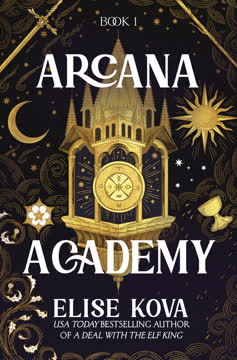Plot Summary
Drowning in Grief
Eve, a successful Black playwright in Brooklyn, is reeling from her third miscarriage and the slow collapse of her engagement to Leo. Therapy feels suffocating, and her parents' home is no refuge. Her best friend Maya offers comfort, but Eve is desperate to escape the city and her pain. She impulsively decides to retreat to her late grandmother's cabin in Gatlinburg, Tennessee, seeking solitude to grieve and write. The journey is both a flight from her life and a search for healing, as Eve struggles with feelings of failure, inadequacy, and the weight of her family's expectations. Her departure is abrupt, leaving Leo and her parents bewildered and hurt, but Eve is determined to find space to breathe.
Custody and Consequences
In Nashville, Jamie Gallagher is in the final throes of a bitter custody battle with his ex, Lucy. The court grants him primary custody of their son, Jack, but the victory is bittersweet. Jamie is emotionally exhausted, haunted by Lucy's infidelity and the collapse of their decade-long relationship. He's a devoted father, but the wounds of betrayal run deep, and he's unsure how to move forward. With Jack spending more time with Lucy for the summer, Jamie decides to retreat to his own cabin in Gatlinburg, seeking solace and a chance to rediscover himself. Both he and Eve are running from pain, unknowingly on a collision course.
Return to the Mountains
Arriving at her grandmother's cabin, Eve is struck by nostalgia and regret. The house is full of echoes—of her teenage pregnancy, her grandmother's love, and the isolation she once felt. She's cut off from the world by spotty cell service, forced to sit with her grief. The quiet is both a balm and a torment, as she tries to write but is haunted by the past. Her only connection is Maya, who insists on regular check-ins. Eve's sense of displacement is profound, but the beauty of the Smoky Mountains offers a glimmer of peace. She's not sure if she's running away or toward something new.
Unlikely Neighbors
Eve's solitude is interrupted by Jamie, her neighbor, who mistakes her for a trespasser. Their first encounter is awkward, tinged with suspicion and humor. Jamie, a white carpenter with a gentle Southern drawl, has been caring for the property since her grandmother's death. Both are wary, carrying their own burdens, but there's an immediate, if reluctant, connection. Jamie's kindness—bringing groceries, offering help—challenges Eve's defenses. Their banter is sharp, but beneath it lies a mutual recognition of pain. The mountains, once a place of exile for Eve, become the backdrop for an unexpected friendship.
Panic and Kindness
A panic attack in a diner brings Eve and Jamie closer. Jamie's calm, practiced response—grounding her, helping her breathe—breaks through her walls. For the first time, Eve allows herself to be cared for, and Jamie finds comfort in being needed. Their shared experiences of heartbreak and disappointment create a fragile intimacy. Eve is surprised by how much she enjoys Jamie's company, and Jamie is drawn to her strength and vulnerability. Their conversations are honest, sometimes painful, but always laced with humor. The seeds of something deeper are planted, even as both resist the idea of romance.
Dinner Invitations
Eve accepts Jamie's invitation to dinner, stepping further out of her comfort zone. In Jamie's cozy, handcrafted cabin, they share a meal and stories of loss—her failed engagement, his divorce, their struggles with family and identity. The evening is filled with laughter, whiskey, and the slow unraveling of secrets. Eve is moved by Jamie's empathy and his respect for her boundaries. Their connection deepens, but both are cautious, aware of the risks of getting involved. The night ends with Eve falling asleep in Jamie's bed, a symbol of tentative trust and the possibility of healing.
Unraveling and Rebuilding
Eve's attempts to reconnect with her parents are fraught with tension. Her mother's criticism and her father's evasions reopen old wounds, especially around her teenage pregnancy and adoption. Writing becomes both therapy and torment, as Eve struggles to turn her pain into art. Meanwhile, Jamie navigates co-parenting with Lucy and the challenges of single fatherhood. Both are forced to confront the ways their pasts shape their present, and the difficulty of forging new paths. Their growing friendship becomes a lifeline, offering hope and the courage to face their demons.
Tennessee Nights
As summer deepens, so does the attraction between Eve and Jamie. Their flirtation turns physical, but sex is fraught with anxiety for Eve, tied to trauma and shame. Jamie's patience and care help her reclaim pleasure, but intimacy also brings old fears to the surface. They negotiate boundaries, learning to communicate honestly about needs and insecurities. The mountains become a place of transformation, where both can shed the expectations of others and discover new versions of themselves. Their relationship is messy, imperfect, but real—a testament to the power of vulnerability.
The First Kiss
A night of stargazing and fireflies leads to a breakthrough. Eve, emboldened by Jamie's gentleness, initiates their first real kiss, followed by a night of passion that is both healing and terrifying. For Eve, it's a reclamation of her body and desires; for Jamie, a chance to love without fear. The experience is transformative, but also destabilizing, as both grapple with what it means to move forward. The boundaries between friendship and love blur, and the possibility of a future together becomes tantalizingly real, even as the past continues to cast its shadow.
Family Ties and Wounds
Thanksgiving and the holidays bring family tensions to a head. Eve's return to New York is marked by painful confrontations with her parents, especially her mother, about the choices that shaped her life. Jamie faces his own family drama, including his mother's return and Lucy's new baby. Both are forced to reckon with the legacies of hurt and the limits of forgiveness. Yet, there are moments of grace—Eve's mother apologizes, Jamie reconciles with his mom, and both begin to see the possibility of healing. Their relationship is tested by distance and doubt, but the connection endures.
Writing and Running
Eve's play is picked up by the Public Theater, a career-defining moment that brings both joy and anxiety. The pressure to succeed, coupled with impostor syndrome and lingering grief, threatens to overwhelm her. Jamie, meanwhile, is accepted to Vanderbilt and NYU, opening doors he never thought possible. Yet, the demands of co-parenting and the fear of repeating old mistakes make him hesitant to pursue happiness. Both are tempted to run—from each other, from their dreams—but find themselves drawn back together by the promise of something more.
Sex, Secrets, and Setbacks
As their relationship deepens, Eve and Jamie confront the secrets that have kept them apart—her history of adoption, his fear of abandonment, their mutual struggles with trust. Sex becomes a site of both healing and conflict, as Eve learns to embrace pleasure and Jamie learns to let go of control. Setbacks—misunderstandings, jealousy, the demands of family—threaten to derail their progress. Yet, each challenge becomes an opportunity for growth, as they learn to communicate, forgive, and choose each other, again and again.
Falling Apart, Coming Together
A series of miscommunications and old wounds lead to a painful breakup. Both retreat into themselves, grappling with depression, regret, and the fear of being unlovable. Therapy becomes a lifeline for Eve, helping her process her grief and find the strength to move forward. Jamie, too, seeks reconciliation—with his mother, with Lucy, with himself. Their time apart is marked by growth and self-discovery, as they learn that healing is not linear and that love requires both courage and humility. When they finally reconnect, it is with a new sense of purpose and possibility.
Meeting Jack
Eve's introduction to Jack is a turning point. Her fear of children—rooted in her own loss and trauma—gives way to genuine affection and connection. Jamie's trust in her deepens, and the three begin to imagine a future together. Yet, the challenges of blending families, co-parenting with Lucy, and navigating long-distance love remain daunting. Both must confront the realities of their lives—the demands of career, the needs of children, the scars of the past—while holding on to the hope of something better.
Love's Complications
As Eve's play opens to acclaim and Jamie considers a move to New York, both are faced with difficult choices. The demands of career, family, and love pull them in different directions. Sacrifices are made—Eve postpones her next play, Jamie contemplates uprooting his life for a chance at happiness. Their love is tested by distance, doubt, and the fear of repeating old patterns. Yet, through it all, they remain committed to growth, honesty, and the possibility of a future together.
Facing the Past
Therapy and honest conversations with family help Eve and Jamie confront the wounds that have shaped them. Eve's mother apologizes for the choices that led to her adoption trauma; Jamie forgives his mother and finds peace with Lucy. Both learn that healing is an ongoing process, requiring patience, compassion, and the willingness to let go of old narratives. Their relationship becomes a space for mutual support and understanding, as they learn to love themselves and each other more fully.
Letting Go, Letting In
As spring arrives, Eve and Jamie find closure with their pasts and open themselves to new possibilities. Eve's play is a triumph, and Jamie is accepted to NYU, paving the way for a future together in New York. Their reunion is joyful, marked by a renewed sense of hope and commitment. They dance, literally and figuratively, into a new chapter, embracing the messiness of love and the promise of happily ever after. The mountains, once a place of exile, become a symbol of transformation and home.
The Play's the Thing
Eve's play, Gamba Adisa, becomes a vehicle for healing—not just for herself, but for her community. The story of Black womanhood, loss, and resilience resonates with audiences, earning critical acclaim and the possibility of a Broadway run. Through her art, Eve finds purpose and meaning, transforming her pain into something beautiful. Jamie, too, discovers new passions and possibilities, as he pursues his education and builds a life with Eve and Jack. Their love story is both ordinary and extraordinary—a testament to the power of art, forgiveness, and the courage to begin again.
New York, New Life
With Jamie and Jack's move to New York, Eve and Jamie embark on a new adventure. The challenges of blending families, pursuing careers, and healing old wounds remain, but they face them together, with humor, honesty, and love. Their story is not a fairy tale, but a real, hard-won happiness—one that honors the past while embracing the future. The city, once a place of pain and disappointment, becomes a canvas for new dreams. Together, they learn that home is not a place, but the people you choose to love.
Happily Ever After?
The novel ends with Eve and Jamie dancing at the afterparty for her play, surrounded by friends, family, and the promise of new beginnings. Their journey has been messy, painful, and imperfect, but they have chosen each other, again and again. The mountains, the city, the stage—all become symbols of transformation, resilience, and hope. Their love is not a fairy tale, but a testament to the power of vulnerability, forgiveness, and the courage to keep trying. In the end, they find that happily ever after is not a destination, but a choice—one they make, together, every day.
Characters
Eve Ambroise
Eve is a Haitian-American playwright whose life is marked by both extraordinary talent and deep trauma. Her teenage pregnancy and forced adoption, coupled with recent miscarriages and a failed engagement, leave her feeling broken and unworthy. She is fiercely intelligent, guarded, and often prickly, using sarcasm and wit as armor. Her relationships—with her parents, her ex, and her best friend Maya—are complex, shaped by love, disappointment, and the struggle for autonomy. Over the course of the novel, Eve learns to confront her pain, embrace vulnerability, and open herself to love. Her journey is one of self-discovery, as she transforms her suffering into art and finds the courage to choose happiness.
Jamie Gallagher
Jamie is a white carpenter and single father, reeling from the end of a decade-long relationship with Lucy. His life is defined by devotion—to his son Jack, to his work, and to the people he loves. Jamie is kind, patient, and quietly strong, but haunted by the wounds of infidelity and the fear of being hurt again. His relationship with Eve challenges him to confront his own insecurities and to trust in the possibility of new beginnings. As a father, he is nurturing and attentive, striving to break the cycles of pain that shaped his own childhood. Jamie's journey is one of forgiveness—of others and himself—and the discovery that love, though risky, is worth the leap.
Leo Coletti
Leo is Eve's ex-fiancé, a well-meaning but emotionally fragile man. His relationship with Eve is marked by mutual care but also by codependency and unspoken resentments. Leo's own struggles with depression and grief mirror Eve's, but their inability to communicate honestly leads to their unraveling. He is hurt by Eve's abrupt departure, but ultimately wishes her well, embodying the bittersweet reality of love that is not enough.
Lucy Ewen
Lucy is Jamie's ex and the mother of his son. Her infidelity and emotional volatility are sources of deep pain for Jamie, but she is also a devoted mother and, in her own way, a survivor. Lucy's journey is one of self-discovery, as she navigates new relationships, motherhood, and the consequences of her choices. Her interactions with Jamie are fraught but ultimately marked by a desire for peace and co-parenting.
Jack Gallagher
Jack is Jamie and Lucy's eight-year-old son, a bright and sensitive child who becomes a symbol of hope and healing. His presence challenges Eve to confront her fears around motherhood and loss, and his relationship with Jamie is a model of gentle, attentive parenting. Jack's resilience and openness offer a counterpoint to the adults' struggles, reminding them of the possibility of joy and new beginnings.
Maya Baudin
Maya is Eve's best friend, a source of unwavering support and tough love. Her humor, insight, and willingness to call Eve out on her bullshit make her an essential presence in Eve's life. Maya's own experiences with family, love, and identity provide a mirror for Eve, and their friendship is a testament to the power of chosen family.
Joan Ambroise
Joan is Eve's mother, a Haitian immigrant whose Catholic faith and desire for respectability shape her parenting. Her decision to force Eve into adoption is a source of lifelong pain for both, but Joan's eventual apology and willingness to listen mark a turning point in their relationship. She is both a source of pain and, ultimately, healing.
Roger Ambroise
Roger is Eve's father, a steady but often absent presence. His inability to confront the past or express emotion leaves Eve feeling abandoned, but his love is evident in small gestures. His silence is both a wound and a form of protection, reflecting the generational patterns that shape the family.
Casey Gallagher
Casey is Jamie's younger brother, a source of humor and perspective. His relationship with Jamie is marked by loyalty and gentle prodding, encouraging Jamie to pursue happiness and break free from old patterns. Casey's own life—his marriage, his openness—serves as a model for Jamie's growth.
Jill
Jill is a local diner worker in Gatlinburg who befriends Eve. Her warmth, wisdom, and connection to Eve's grandmother provide a sense of belonging and continuity. Jill's presence is a reminder that family can be found in unexpected places, and her support helps Eve feel seen and valued.
Plot Devices
Dual Narrative Structure
The novel alternates between Eve and Jamie's perspectives, allowing readers to experience their inner worlds and the ways their stories mirror and diverge. This structure highlights the universality of pain, the specificity of individual experience, and the slow, often nonlinear process of healing. The dual narrative also creates dramatic irony, as readers see the misunderstandings and missed connections that threaten to keep the protagonists apart.
The Mountain Retreat
The setting of Gatlinburg serves as a crucible for transformation. The mountains are a place of exile—where Eve was sent as a pregnant teen, where Jamie retreats after divorce—but also a site of rebirth. The isolation forces both characters to confront their pain, while the beauty and quiet offer space for reflection and connection. The cabin becomes a symbol of both the past's hold and the possibility of new beginnings.
Art as Therapy
Eve's work as a playwright is both a source of pressure and a means of healing. Her struggle to write mirrors her struggle to process trauma, and the act of creation becomes a way to reclaim agency and transform pain into meaning. The play within the novel serves as a meta-commentary on the power of storytelling to heal, connect, and bear witness.
Intergenerational Trauma and Forgiveness
The novel explores how family secrets, cultural expectations, and unhealed wounds are passed down through generations. Both Eve and Jamie must reckon with the legacies of their parents—their choices, their silences, their failures—and find ways to forgive, both others and themselves. Therapy, honest conversation, and the willingness to be vulnerable are depicted as essential tools for breaking cycles of pain.
Blended Families and Chosen Family
The challenges of co-parenting, adoption, and forming new families are central to the narrative. The novel resists easy resolutions, showing the messiness and beauty of building a life with others. Friendships, mentors, and community members (like Maya and Jill) are as vital as blood ties, and the story celebrates the power of chosen family to offer support, love, and acceptance.
Foreshadowing and Symbolism
The recurring imagery of fireflies, the changing seasons, and the theater stage serve as symbols of hope, transformation, and the possibility of light in darkness. Foreshadowing is used to build tension—Eve's fear of children, Jamie's reluctance to trust, the specter of past betrayals—while also hinting at the potential for growth and redemption.
Analysis
Once Upon a Time in Dollywood is a deeply moving exploration of grief, healing, and the messy, beautiful work of building a life after loss. Ashley Jordan crafts a narrative that is both specific—rooted in the experiences of Black womanhood, adoption, and Southern family dynamics—and universal in its depiction of heartbreak, resilience, and the search for belonging. The novel resists the easy comforts of the rom-com, instead offering a romance that is hard-won, honest, and transformative. Through Eve and Jamie's parallel journeys, Jordan interrogates the ways trauma shapes identity, the necessity of vulnerability, and the power of art to turn pain into meaning. The story is unflinching in its portrayal of depression, anxiety, and the long shadow of family secrets, but it is also suffused with humor, hope, and the redemptive possibilities of love. Ultimately, the novel suggests that happily ever after is not a destination, but a daily choice—a commitment to growth, forgiveness, and the courage to keep trying, even when the path is uncertain.
Last updated:
Review Summary
Once Upon a Time in Dollywood is a powerful debut novel that explores trauma, healing, and love. Readers praise Jordan's beautiful writing and complex characters, particularly Eve and Jamie's emotional journey. The book tackles heavy themes like grief and family relationships with depth and authenticity. While some found the pacing slow at times, many appreciated the realistic portrayal of personal growth and communication in relationships. The Tennessee setting and Dollywood references add charm to this emotional story that resonated deeply with many readers.
Download PDF
Download EPUB
.epub digital book format is ideal for reading ebooks on phones, tablets, and e-readers.









